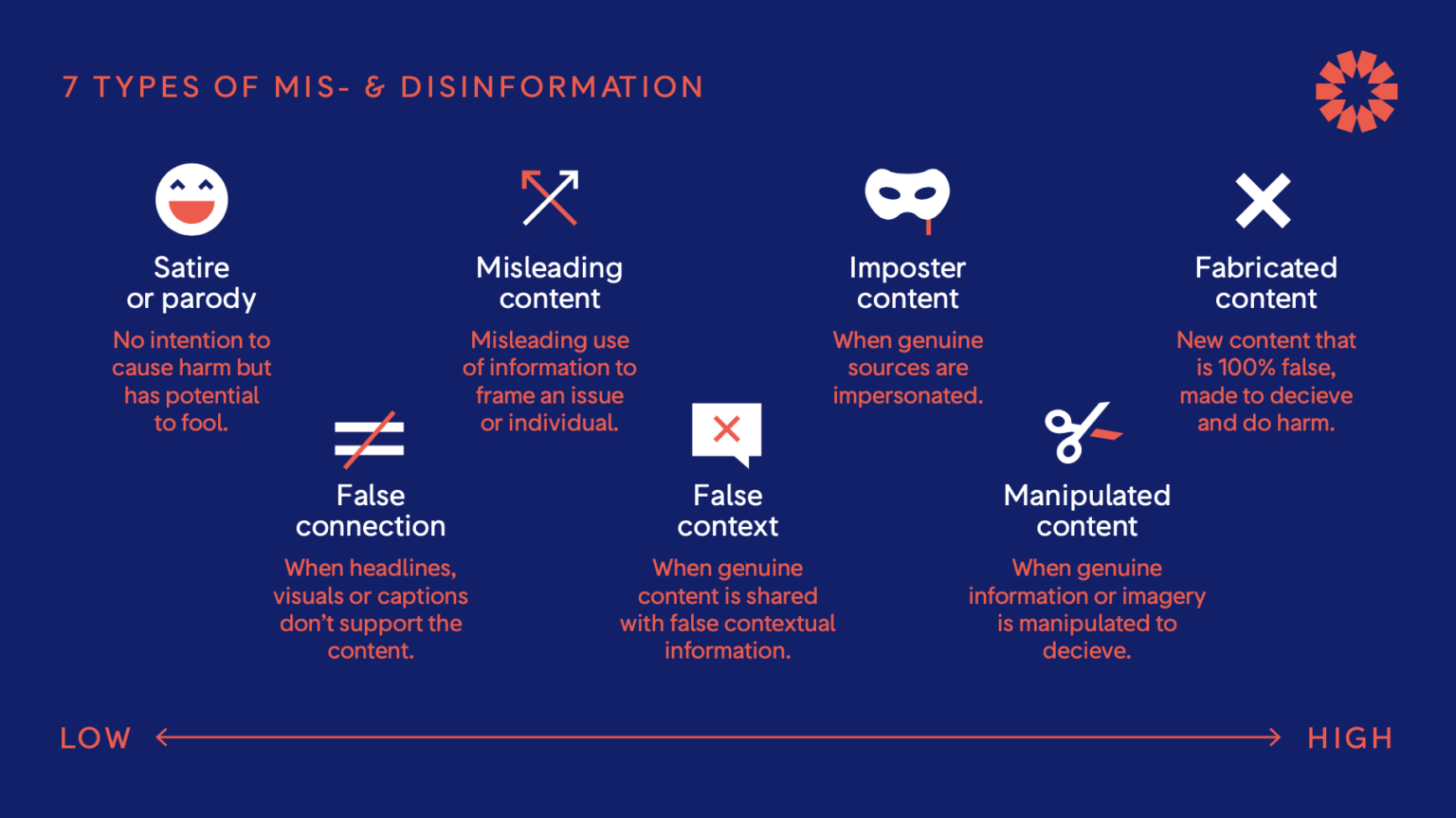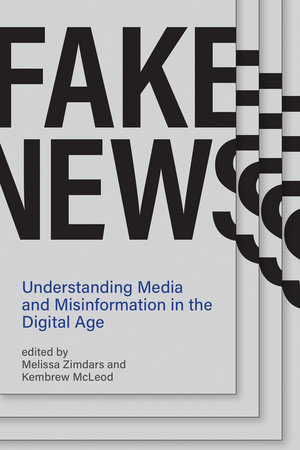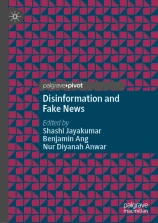We live in a digital age where information is at our fingertips 24/7, and the internet offers a level of anonymity that makes it easy to spread false news and information, whether accidentally or deliberately.
Fake news refers to distorted and sometimes falsified reports with the intention to mislead. The concept originally referred specifically to political reports, but has now expanded to generally mean intentionally inaccurate information.
! Note !: Journalists can report on a story that naturally develops; sometimes in the process the information changes. That is not fake news. A journalistic story has the intention of providing the most accurate information available at that time. Fake News intends to mislead.
Terms as defined by the Oxford Learner's Dictionary:
Other related terms:

Wardle, Claire. "Understanding information disorder." First Draft News, 22 Sept 2020, https://firstdraftnews.org/long-form-article/understanding-information-disorder/
From lowest to highest:
 Fake News
by
Melissa Zimdars (Editor); Kembrew Mcleod (Editor)
Fake News
by
Melissa Zimdars (Editor); Kembrew Mcleod (Editor)
 The Psychology of Fake News
by
Rainer Greifeneder (Editor); Mariela Jaffe (Editor); Eryn Newman (Editor); Norbert Schwarz (Editor)
The Psychology of Fake News
by
Rainer Greifeneder (Editor); Mariela Jaffe (Editor); Eryn Newman (Editor); Norbert Schwarz (Editor)
 Disinformation and Fake News
by
Shashi Jayakumar (Editor); Benjamin Ang (Editor); Nur Diyanah Anwar (Editor)
Disinformation and Fake News
by
Shashi Jayakumar (Editor); Benjamin Ang (Editor); Nur Diyanah Anwar (Editor)
 Beyond Fake News
by
Justin P. McBrayer
Beyond Fake News
by
Justin P. McBrayer
This guide was created by Ontario Tech Libraries and is licensed under a Creative Commons Attribution International 4.0 License, except where otherwise noted.
